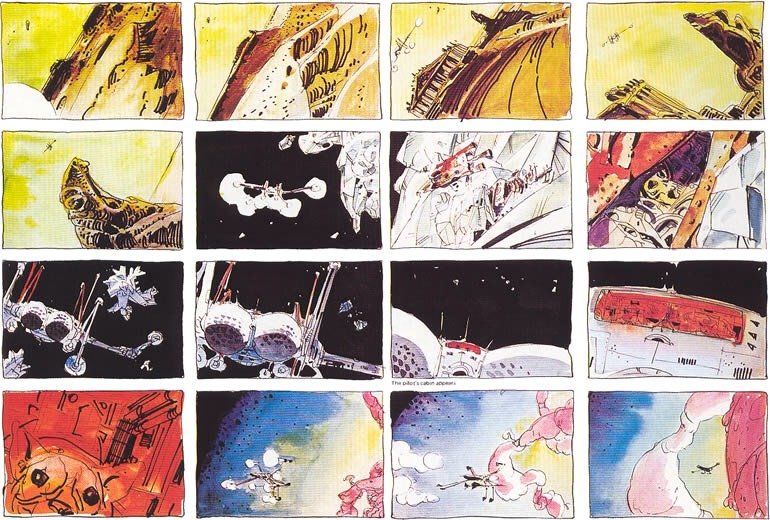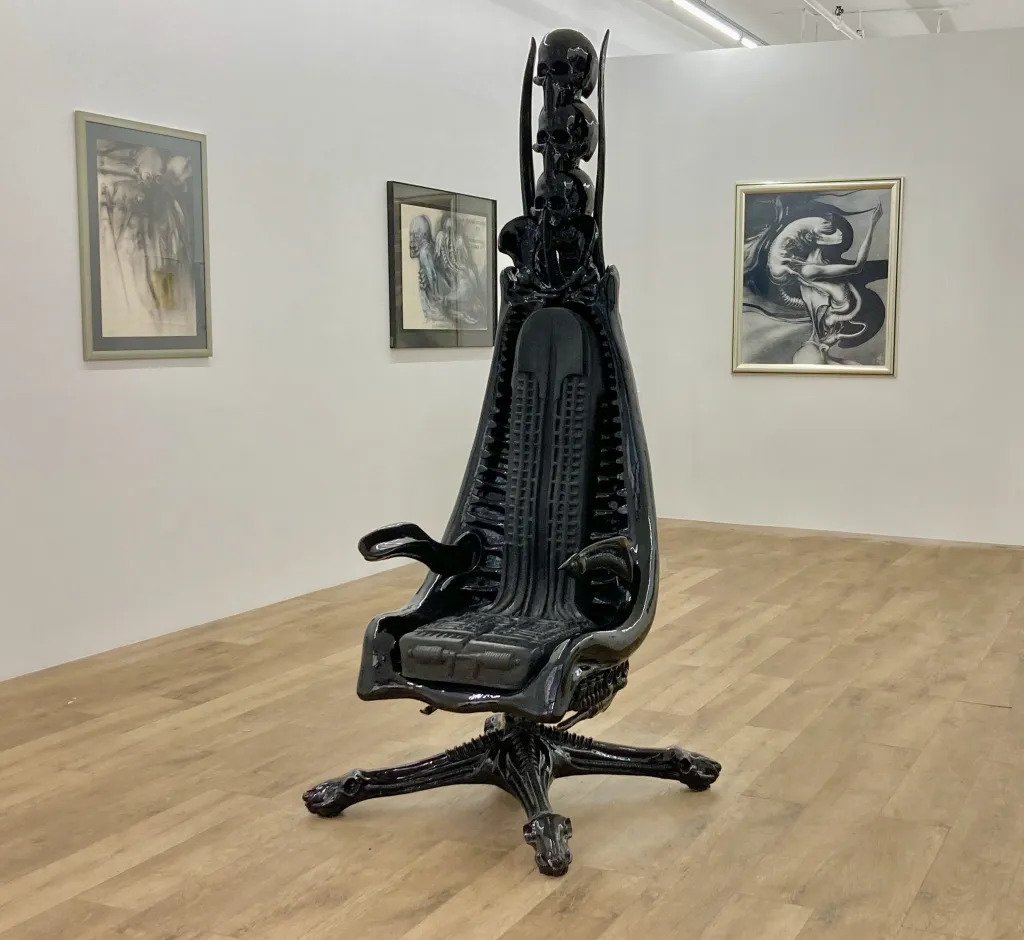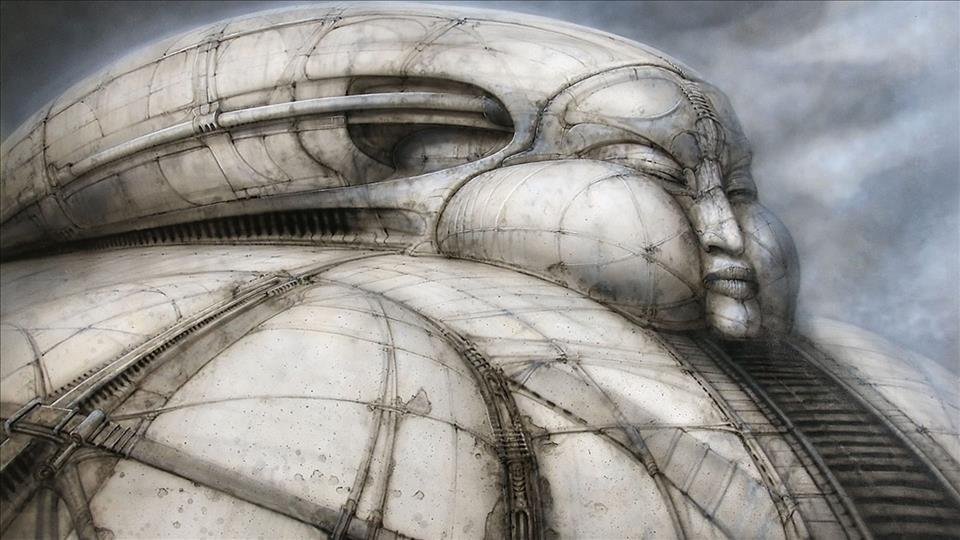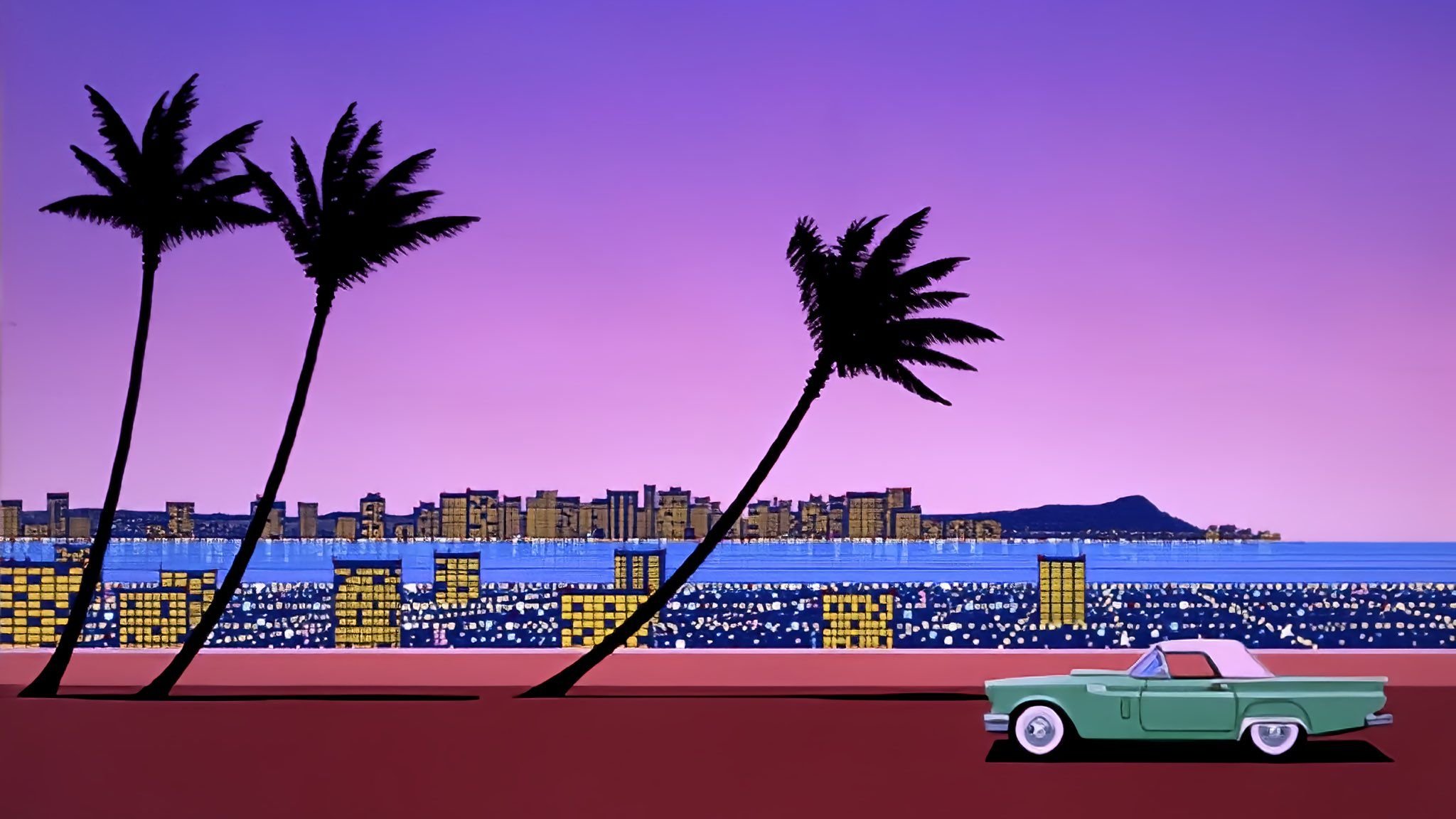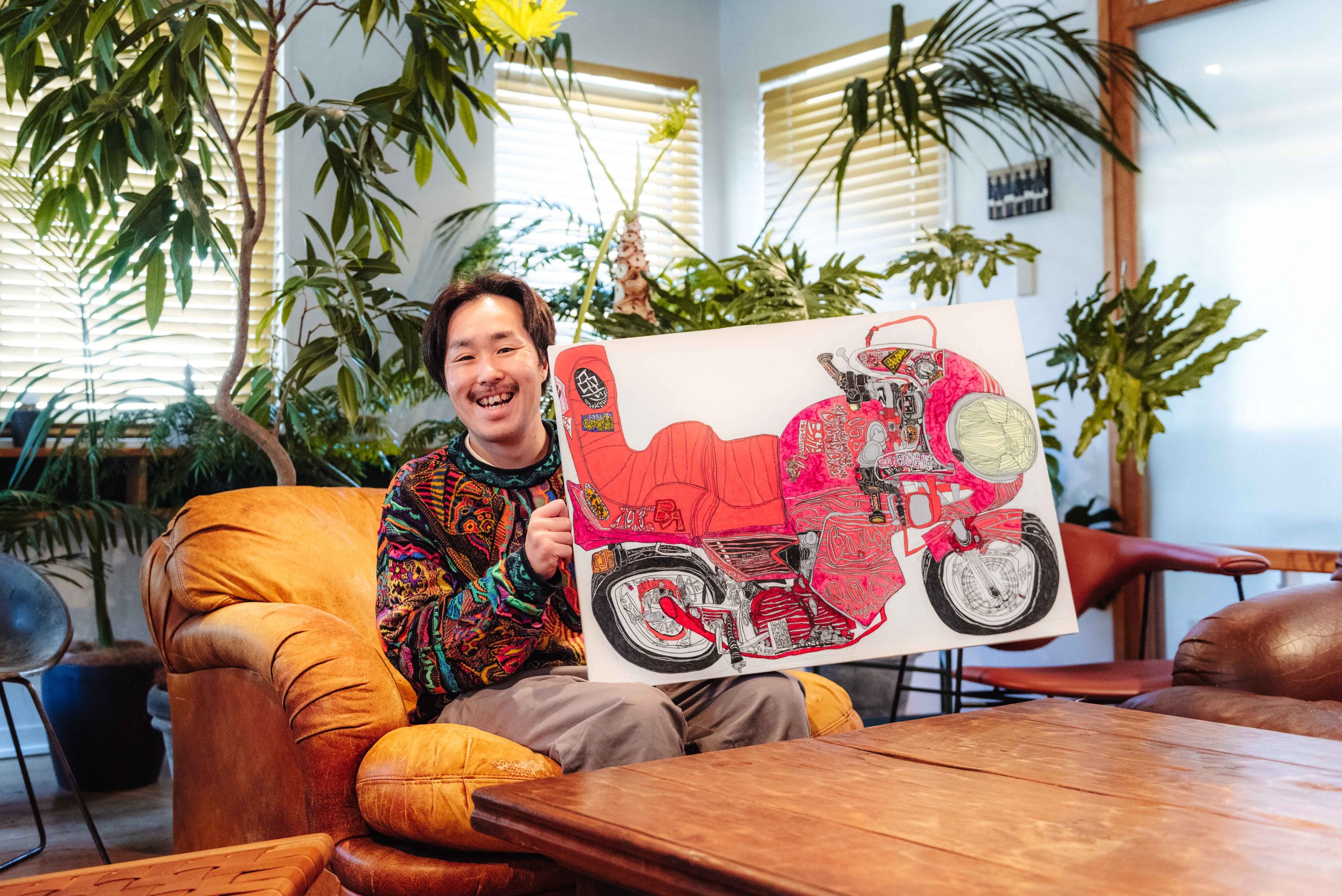The Best Movie Never Made: Long Live Dune

The year is 1974.
Alejandro Jodorowsky, Jean Giraud "Moebius", H.R Giger, Mick Jagger, Chris Foss, Dan O'Bannon, Dalí, Pink Floyd, are just a few of the names that were all part of the epic dream team that were set to bring Frank Herbert's novel, Dune, to the silver screen.
The 20 hours long, ambitious, mind-bending brainchild of the surrealist director, wasn't just meant to be a mere book adaptation but was out to change the young minds all over the world.An artistic, cinematographical god-like project no one could have ever dreamt of...
...resulting in the best sci-fi film that was never made.
So what the hell happened?!
Artists have often overcome the boundaries of their imagination to create the impossible. There seems to be an unspoken competition between them for who can come up with the “next best thing” or a first for many firsts.
Change is essential; it takes to throw away everything one has known to start anew and birth a revolution. However, it’s not always as easy as it seems. Many projects have fallen through the cracks of uncertainty, self-doubt, or of a bad budget, although they could have redirected the course of art history drastically.
With an intended 20 hour runtime, this was the case for the best movie in history that was never made: Dune by Alejandro Jodorowsky. Set in the endless desert of Arakas, the story of Dune, a sci-fi epic by Frank Herbert, was met with the unworldly artistic touch of the cinema director Jodorowsky, who sought to turn this novel into an incomparable cinematic experience.
The Book
Frank Herbert’s novel is based around the conflict between two royal houses in the distant future. On one side is the House Atreidis, as the good party, and on the other, House Harkonnen, as the evil party. Both fight for dominance over the planet Arakas who is the sole place where the precious Spice can be harvested. This Spice is the most valuable substance in the entire galactic empire for to its importance related to inter-galactic travel. The main characters of the story are Paul Atreidis, the teenage son of Leto Atreidis, and the circle surrounding him, including his mother, and the native people of Arakas, called the Fremen. House Harkonnen is led by the gigantic Vladimir Harkonnen and his nephews Rabban and Feed-Rautha Harkonnen. Herbert’s book is an epic story filled with futuristic visions, battles and an undertone of politics.
Concept art + Sketches for Jodorowsky’s Dune
The Dreamer
Alejandro Jodorowsky was born in Chile in 1929. At the age of 18, he began writing screenplays and got in contact with the advancing avant-garde theatre scene. He directed countless plays in Chile, Mexico and France, before getting more seriously involved in cinematic works. He was also widely known for his use of psychedelic substances, his study of zen practices and his penchant for tarot cards.
ACT 1: A Glorious Birth
In 1974, a collective of French creatives bought the movie rights to Frank Herbert’s Dune. The role of turning the whole concept into a full movie was given to Jodorowsky, who, at that time, was already known for his two previous movies, “El Topo” and “The Holy Mountains”, which were famous for their heavy psychedelic themes and symbolism. Hence, Jodorowsky was seen as a sort of an avant-garde punk in the industry. The fact that his first feature film, “Fando y Lis”, which caused riots in Mexico and was ultimately banned by the Mexican government, only further underlined his status as a renowned anti-establishment director.
According to himself, Jodorowsky randomly came across a bande-dessinée, a French comic, by the artist Jean Giraud. The comic was a Western called “Blueberry” and Jodorowsky decided that Giraud would be his “camera lens”, whom he would task with creating the 3000 panel long storyboard. When Jodorowky actually met Giraud, he realized that Giraud had an artistic alter-ego. When he drew his Western comic “Blueberry”, he would work under the name Giraud and, when he drew science fiction and psychedelic avant-garde pieces, he would call himself Moebius. Jodorowsky immediately hired him and they began working on the massive storyboard. Moebius went on to also produce nearly all the costume designs for Jodorowsky’s vision of Dune
Storyboard design by Moebius
The next “warrior”, as Jodorowsky called the creatives on his team, was Dan O’Bannon. He was hired to work on the film’s special effects. O’Bannon was known for his energetic and sometimes overly idealistic optimism, so when Jodorowky told him to “sell [...] your home and all your possessions in the USA, move to Paris and prepare yourself to have your life changed!”, he took it quite literally and did so immediately.
Jodorowsky and Moebius
As previously mentioned, the main focus of the book Dune lies upon Paul Atreidis and his immediate family as well as his companions. Therefore, Jodorowsky casted David Carradine as Paul’s father Leto Atreidis, who’s also known for starring in Kill Bill.
However, Jodorowsky’s next move was a clear statement of his over-the-top taste, which would also only be permitted during the freedom and craze of the 70s. In the book, Leto’s teenage son Paul Atreidis, the heir to House Atreidis, is trained and prepared to become a leader from an early age. Therefore, he decided to cast his 12-year old son Brontis as Paul. Since the character has to fight hand-to-hand combat with knives and swords, Jodorowsky decided to hire a martial artist by the name of Jean-Pierre Vignau, who would act as a trainer to his son. Brontis would train six hours a day, five days a week for two years, which would be unthinkable in today’s cinema industry. Although it was only at the early stages of production, it was clear that Jodorowsky was whole-heartedly dedicated to recreating his version of Dune.
ACT 2: The Spreading of Wings
At this point, Jodorowsky was unstoppable. He hired Chris Foss for designing spacecrafts and buildings for the set. Foss was already a legend in his field at that time; take any sci-fi novel from the 70s-80s with a spacecraft on the cover and there’s a big chance that Foss painted it.
Emperor’s Castle (Chris Foss)
Pirate ship with “spice” pouring out of it (Chris Foss)
This might seem impressive to dedicated fans of science fiction, but it pales in comparison to Jodorowsky’s next step. The main conflict in Dune happens between House Atreidis and House Harkonnen. However, there is a third big player: Shaddam IV, the Emperor of Mankind. He could’ve reached out to Hollywood in order to cast a good actor for this role but Jodorowsky wouldn’t be Jodorowsky if he had made such a conventional decision. He came to the conclusion that “the only person who can play this role is Salvador Dali” and, since the stars somehow decided to align themselves perfectly for Jodorowsky, he was told that the avant-garde artist was staying in the exact same hotel in Paris.
Dali was fascinated by Jodorowsky and immediately agreed to work with him. Unfortunately, Dali was an equally eccentric person as was the director, so he had several conditions. Two of these demands included being flown with a helicopter to whatever location he wanted to go while working on the film and the second was that he would be paid $100,000 for every hour he would work on the film, thus making him the best paid actor at that time. Jodorowsky agreed but changed the script so that Dali would only have to work for one hour and all further lines would be spoken by a robotic mask representing his face. Additionally, Dali insisted that his character The Emperor of Mankind, Shaddam IV would sit on a throne sculpted as a toilet made up of two intersecting dolphins.
Salvador Dali
Salvador Dali as The Emperor of Mankind (Drawing: Moebius)
HR Giger and concept art
While visiting the artist, Jodorowsky was presented with an art catalogue by a Swiss man called Hans Rüdi Giger. Nowadays, he is known as HR Giger, the man who would later go on to invent the iconic Alien from Ridley Scott’s film of the same name. He hired Giger to create most of the costumes and set designs for House Harkonnen, the evil counterpart to House Atreidis.
Up to that point, the Chilean director had all visually artistic fields covered, but he still needed music. He and his producers called the manager of a band that was very famous at that time: Pink Floyd. They met in London to discuss a collaboration. The band members were eating hamburgers from a local McDonald’s when Jodorowsky and his team entered the studio. The band members seemed fairly uninterested and were rather concentrated on eating their BigMacs. This angered Jodorowsky into an all-out tirade and he yelled at them: “What the fuck are you doing?! We are making the best film of all time, we will change the course of humanity and all you idiots are interested in is eating your stupid hamburgers!” This impressed the band so much that they immediately agreed to working with him on the film.
After hiring the most creatively loaded team for this project, Jodorowsky still had two roles to fill in: that of Vladimir Harkonnen and that of his heir and nephew Feyd-Rautha Harkonnen. The latter is described in the book as an androgynous evil sadist and Jodorowsky immediately decided to cast none other that Mick Jagger from The Rolling Stones. Jodorowsky was unsure he’d be able to even reach out to The Rolling Stones pop-star, as if hiring all previous members of his team was just a stroll in the park. According to the director, he was attending an event in Paris when he suddenly saw Mick Jagger amongst the attendees. He caught the eyes of the pop-star, who started moving directly towards him through the crowds of people. Jodorowsky later stated: “I told him that I needed him for my film and he just said ‘yes’. We then smoked very strong marijuana together”.
Moebius’s character design for the Saudakar
Character designs (Moebius)
Filling the role of Vladimir Harkonnen was more difficult. The Baron of House Harkonnen is described in Herbert’s Dune as a massively overweight, vile man who can only move with the help of anti-gravity devices strapped to his body.
Members of his team recommended various actors to him but Jodorowsky denied all and said: “There is only one person who can play that role: Orson Welles!” Welles at that time was infamous for his diet and mood-swings. Jodorowsky sent his agent to various restaurants in Paris in search of the American director and actor who was visiting the city at that time.
Vladimir Harkonen character design (Moebius) Orson Welles
He finally met him in a fancy restaurant where Welles sat at a table alone, eating, surrounded by six empty wine bottles. The agent who found him told Jodorowsky that he had already tried to talk to Welles but was rudely sent away. The movie director went to the restaurant's chef and inquired what wine Welles drank the most.
He sent a bottle to Welles’ table and said bottle was quickly emptied. Then, Jodorowsky was allowed to approach Orson Welles and present his concept for Dune as well as his role as Vladimir Harkonnen. Welles immediately denied his request and was about to send him away, when Jodorowsky struck him a deal. He would play the role and could ask for any amount of money and, in addition to that, Jodorowsky would hire the chef from the same restaurant they were currently dining at to be the actor’s personal cook on set. Welles smiled and agreed.
Jodorowsky managed to get an unbelievable group of people together in order to fulfill his personal mission of creating the best science fiction film of all time. Everything was set to be perfect. The wings of the movie were spread wide.
ACT 3: Flying Too Close to the Sun
The previous steps in the grand journey for Dune’s production sounded like a legendary tale. However, reality struck with a mighty right-hand blow. In Hollywood’s perspective, to say that movies were “new media” in the 1970s would be very inaccurate, but their budgets weren’t as boosted as they are today. For contrast, the current most expensive movie of all time is “Pirates of the Caribbean: On Stranger Tides'' with a budget of around 380 million USD [it should be noted that this is the 4th film of the franchise]. Jodorowsky’s starting budget was roughly 10 million dollars USD. This was a lot of money back then but still not an unreasonable amount. Even so, that budget had nearly been used up at that stage and there were another 5 million dollars needed to finish the film, or rather to even start filming at all.
Jodorowsky went to the US and met with countless studios to discuss the further financing of the film. At this stage, Jodorowsky’s avant-garde and anti-establishment personality started to backfire on him. Studios at that time were especially suspicious of anything remotely artisctically advanced. The Hollywood formula remarkably hasn’t changed ever since; anything that’s “new” must be a mix of two old things. For example, you could take a Hollywood classic like Indiana Jones, which proved itself to work nicely at box offices, add pirates to it, resulting in Pirates of the Caribbean. This very formula guaranteed the American epicentre of cinema to not loose any big amounts of money and especially saved them from unnecessary risks.
With this in mind, Dune had two gigantic problems in the eyes of Hollywoods accountants: Dune was very new due to its genre, as science-fiction hadn’t really been explored by the movie industry yet [Star Wars was to be released in 1977] and Dune was a definite risk in their eyes. Jodorowsky, as stubborn as he is a cinematic rebel, first told the studios that the film would be 9 hours long, then went on to say he’d make it 14 hours long until he ultimately claimed it should be a 20 hour long movie that would be shown in two parts over the course of two days. All studios backed out and it became apparent that the project would have to be put on hold indefinitely. This was the end for Jodorowsky’s Dune.
Concept poster for Jodorowsky’s Dune (1975)
Moebius stopped developing costume designs, Chris Foss halted his work on the design of the planets and spaceships, and HR Giger returned back to Switzerland, having only finished a few set designs for the film. Salvador Dali went back to Spain and Pink Floyd reluctantly took the next flight to London in order to continue working in their studio. Mick Jagger focused on his work with The Rolling Stones and Orson Welles was informed that he wouldn’t get that private cook he was promised and, on top of that, he wouldn’t be needed to play any roles at all. Jodorowsky’s son Brontis endured 2 years of merciless martial arts training for nothing. Jodorowsky fell into depression since his futuristic vision for a revolutionary piece for the film industry was shattered, and all his efforts were met with no rewards. His mental health took a toll on his productivity and the Chilean director stopped working on projects for the next few years.
The hardest fate was that of Dan O’Bannon, who was supposed to be the writer for the film. As aforementioned, he enthusiastically sold all his belongings and moved to Paris in order to work on the movie; he was faced with complete personal bankruptcy and the risk of homelessness.
Dan O’Bannon would later work on the production of Ridley Scott’s Alien (1979)
In 1984, another cinematic version of Dune, written and directed by David Lynch, was released, which humiliated Jodorowsky, who was somewhat of a fan of Lynch. Jodorowsky said when asked about the news: “This broke me.” He was dragged to a local cinema by his sons who forced him to watch David Lynch’s Dune. He reportedly sat slumped in his seat as the movie began but gained more and more energy as he continued watching. According to himself, he was filled with joy because “the movie was a failure [...] Lynch messed it up!” This film went on to receive very mixed reviews and the director himself distanced himself from his own work. This comforted Jodorowsky into knowing that he still had a chance to produce Dune on his own way.
On the other hand, thanks to the failure of the original attempt at a Dune movie, Dan O’Bannon went on to write Ridley Scott’s Alien and HR Giger took a lot of his work for Dune and implemented it into his designs for Alien. Jodorowsky and Moebius continued working together and decided to take their previous efforts while collaborating on Dune and turn it into a comic. They created “The Incal”, which is nowadays labeled by some as the best science fiction comic of all time. Countless character designs Mobius made for Dune were used in creating this comic, as well as part of the script Jodorowsky wrote for the never-made film. Additionally, another project that Jodorowsky’s Dune birthed was the comic “The Meta Barons'' illustrated by Juan Gimenez. For this project, Jodorowsky was able to directly implement the vision he had of Dune and turn it into his very own personal world.
Dune (2021) Trailer
Zendaya and Timothy Chalamet, (Dune, 2021)
Dune (2021)
In 2021, Denis Villeneuve released his own cinematic version of Dune, and it seemed to be yet another repercussion from Jodorowsky’s Dune. The set designs reminisce of some of Chris Foss’ monumental works, the sword-fighting resembled the style depicted in the storyboard drawn by Moebius, and the members of House Harkonnen were strongly inspired by The Engineers from Prometheus, which in turn was inspired by the work of HR Giger.
Nearly 50 years have passed since the impossible and fantastical project of Alejandro Jodorowsky was buried. However, we can still today see the impact it had on popular culture and its repercussion on the world of cinema and other arts. Film institutions and Hollywood were not ready for this potential film, and neither were the audience. One can only imagine how pop culture would’ve evolved if Jodorowsky’s psychedelic 20 hour long Dune was made, starring Salvador Dali as the Emperor of Mankind, sitting on a toilet throne of dolphins; Orson Welles playing the evil Baron Harkonnen, floating through the air with anti-gravity devices strapped to his humongous body; Mick Jagger battling a sword-fight with Jodorowsky’s extremely muscular 14 year old son, all while Pink Floyd played in the back. And so, Jodorowsky’s dream shall live on forever in our minds.
About The Author:
Johnny Terror is an illustrator and artist whose works are heavily influenced by science-fiction and cyberpunk which occasionally brings him to writing.
Edited by Mizuki Khoury




